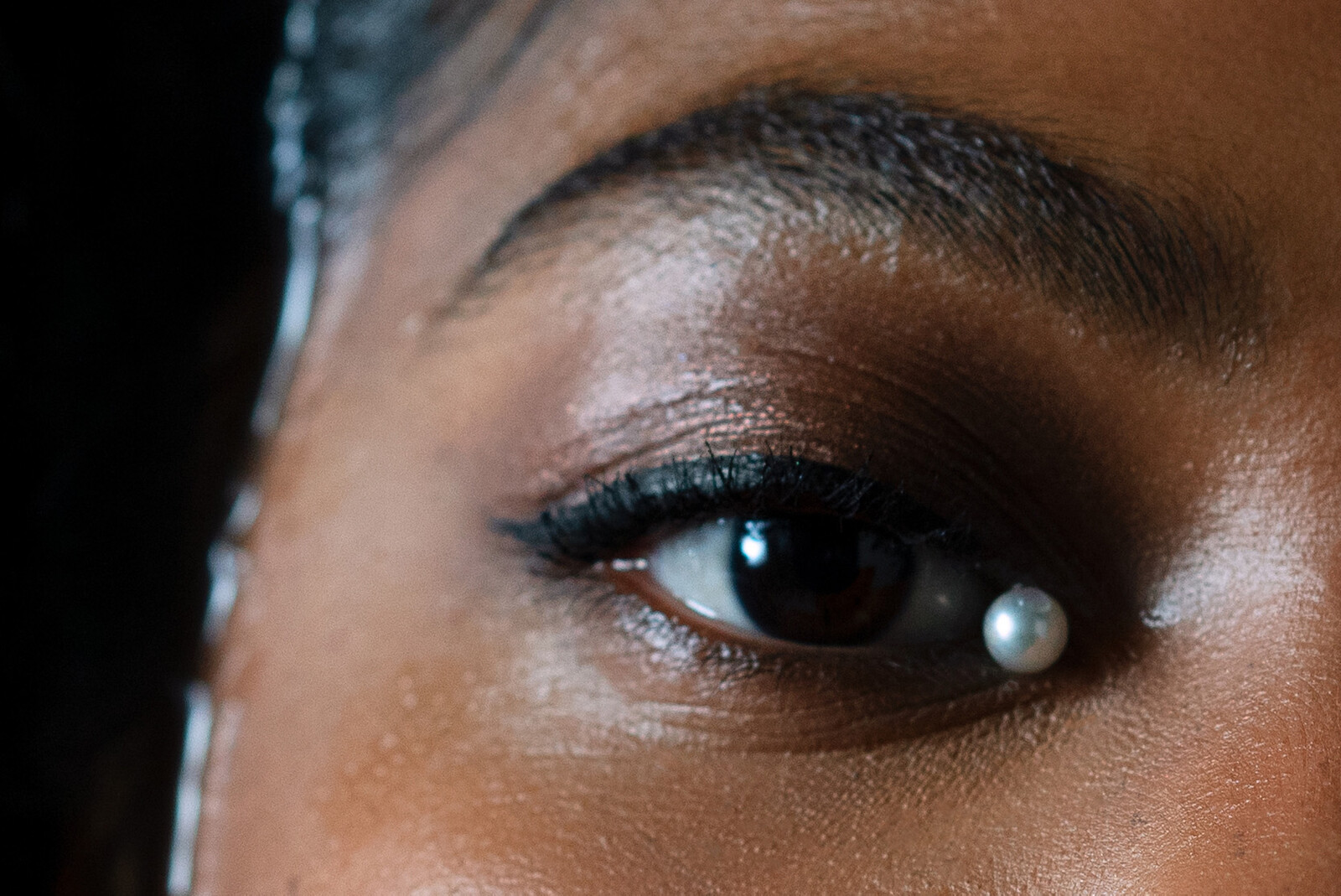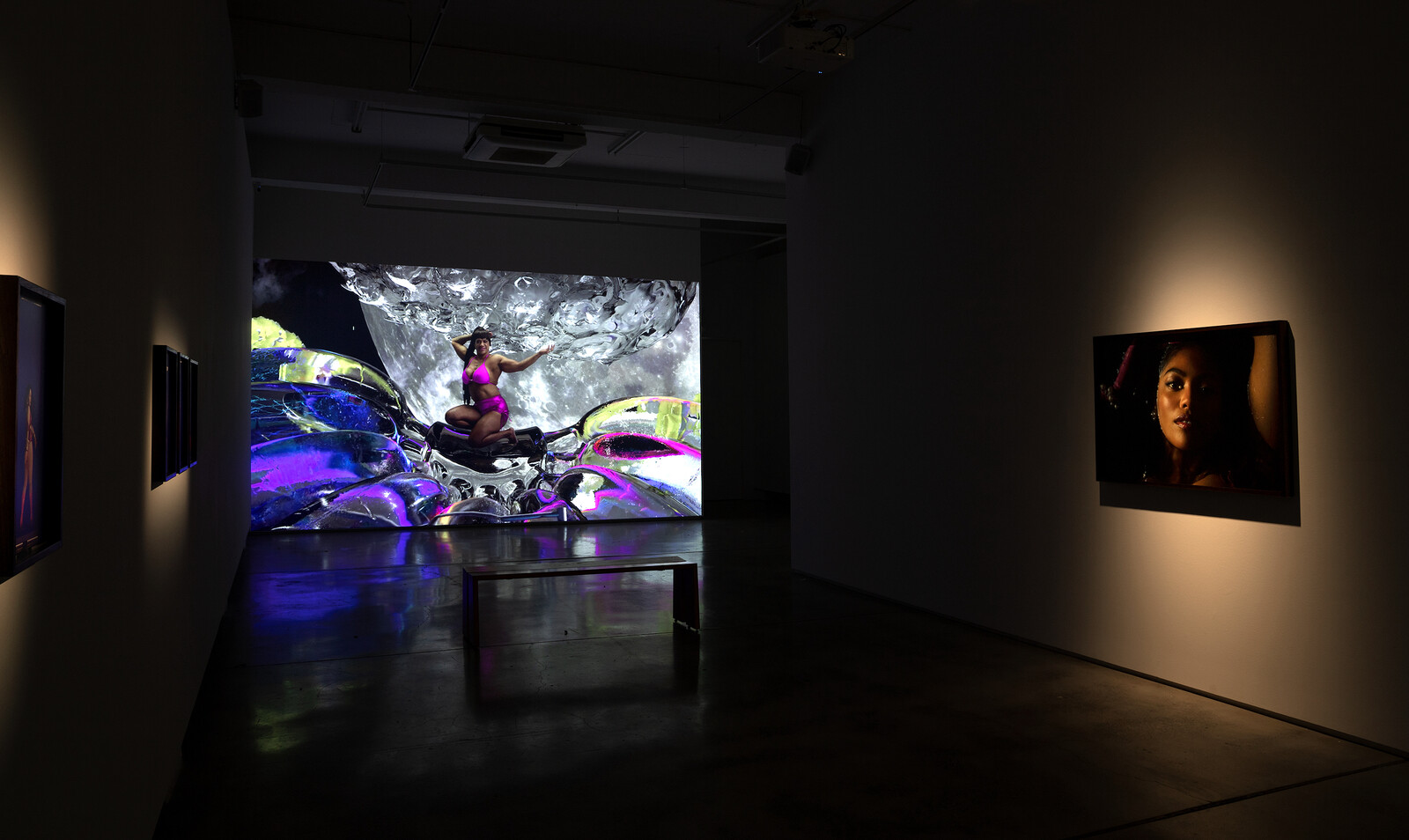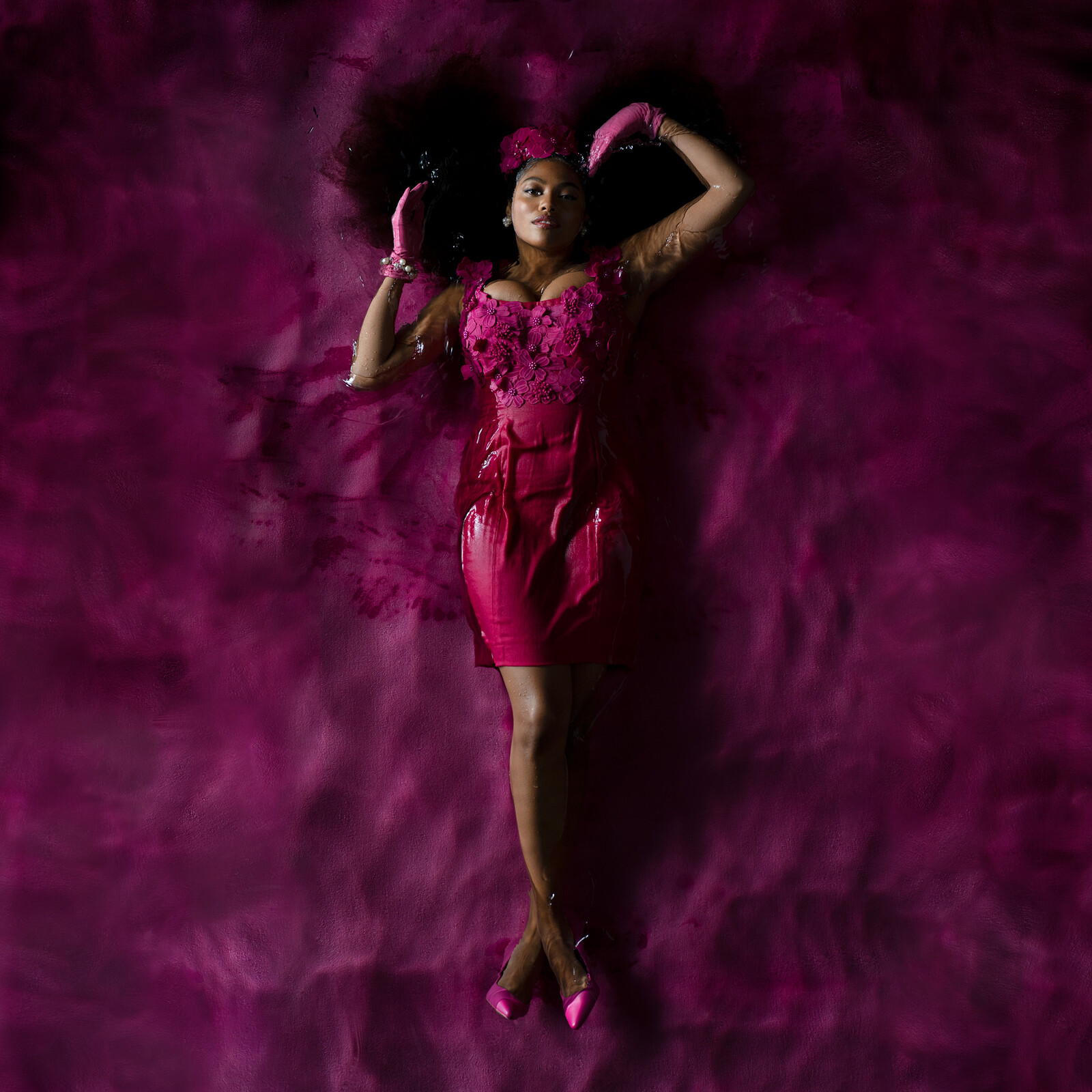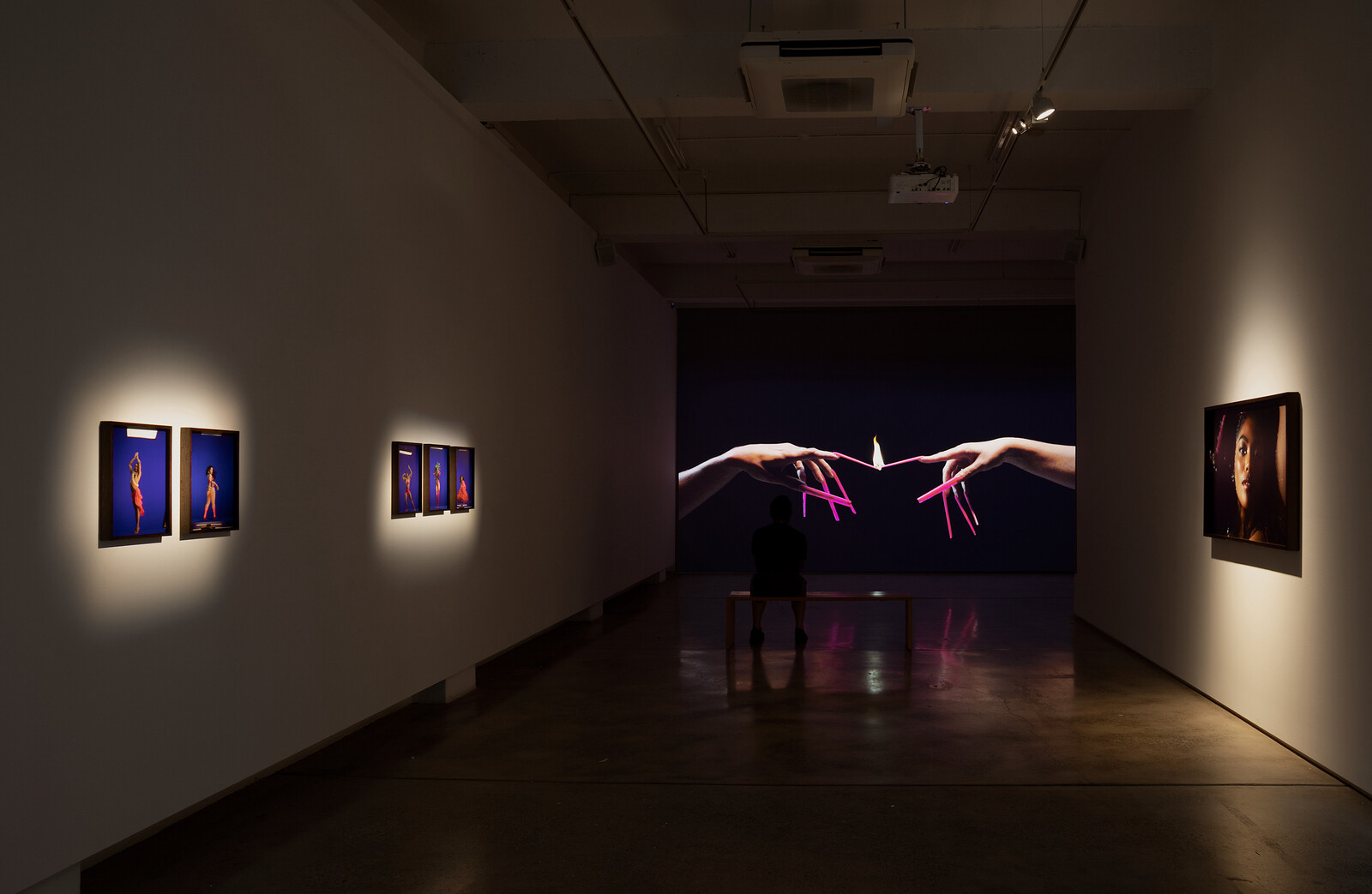Angela Tiatia’s single-channel moving image work The Dark Current (2023), projected onto one wall in a darkened room, opens with a body-as-landscape. A cropped, lateral view of a floral appliqued fuchsia dress follows the concave slope from breast to waist as dark waters lap in the background, like an island. The camera slowly pans to the side, following the cleavage’s arc until it reaches the face of a woman with a pearl perched delicately at one tear duct. The lens then rises over her to gaze down at her from above. Lying in black water atop a magenta panel, her arms move slowly to create a frame of rippling waves around her.
The pearl is a portal to The Pearl (2022), an earlier immersive video installation not shown here, which was commissioned for “Matisse Alive” at the Art Gallery of New South Wales (2021–22), reflecting on Henri Matisse’s travels to the Pacific Islands through juxtapositions of his works with tivaevae quilts and commissions by artists Nina Chanel Abney, Sally Smart, Robin White, and Tiatia. Departing from Venus in a Shell (1930), a bronze sculpture that Matisse made the year he visited Tahiti, Tiatia composed The Pearl as a digital tapa, referring to the patterned, Polynesian ceremonial bark cloths primarily made by women. Images of pink hibiscus, orchids, clamshells, and white pearls, made with computer software and artificial intelligence, connect the stories of Venus, Aphrodite, and Pacific creator god Ta’aroa, who were all born from a shell, which multiply to form a fountain-like tower of cascading water against a candy blue sky.
There are echoes of The Pearl in The Dark Current, in keeping with tapa as a fusing of fibres on which scroll-like visual poems are scored. Composed in three parts as a meditation on past, present, and future, and tied together by Filipina-Australian producer, composer, and performer Corin Ileto’s resonant sound design and music, the first movement of the latter work honors Tiatia’s mother and a generation of Pacific Islander women who migrated to Australia, New Zealand, and beyond in the 1960s. Depicting a kind of celestial birth that, like The Pearl, harmonizes disparate points of origin, Tiatia’s iconic body in the first sequence opens up the universal as a space that defies modernity’s co-option of the term, upholding its essence as vā, a concept describing the relational unity of all things in space. That defiance comes through in the second movement, which begins with the view of a stone circle arranged in the grass among the tall trees of Raʻiātea island, home to the ancient and sacred cosmopolitan gathering site of Marae Taputapuātea. Two women dressed in pink blend into the frame, tracing a circle with their arms in a pink pool, as more figures appear and their images splice with those of the island, fusing connections between body and land, generations and geographies. Then, the screen goes dark, and Tiatia appears in a hoodie staring into the camera. She holds a burning image until it falls in the water and floats away, as if to release history’s fetishized vision of Pasifika women once and for all. Two hands clap over the resulting frame, resetting the air, as a dancer in magenta fabrics appears, communing with black waters, as footage of the sea weaves in and out of sight.
At its heart, The Dark Current honors the ancient, embodied connections linking Pasifika women across the fluid realms of time and space. Unscripted scenes of dancers breaking their synchronized, floral-like formation to the call of Tiatia’s directorial “cut” express those relations in grounded terms. Laughter, clapping, hugs, and conversation dissolves the boundary between the real and iconic, highlighting the co-creation of Pasifika representations by Pasifika artists for a Pasifika gaze that embraces its heterogeneous hybridity—as evidenced by the studio where Tiatia is filming alongside collaborators whose common language is English, and by Tiatia herself, who—like so many before, with, and ahead of her—has been shaped by a diasporic, intersectional reality linking Sāmoa, Aotearoa New Zealand, and Australia. The viewer is invited to connect with this “Moana cosmopolitan imaginary,” as curator Dr Léuli Eshrāghi describes it in the exhibition text, citing Sāmoan scholar Lana Lopesi: an imaginary enacted through su’ifefiloi, which Lopesi defines as “the Sāmoan practice of sewing different parts together.”
All of which sets up The Dark Current’s final movement, where dancers populate a trio of intergalactic fountains created with AI-generated visuals combined with live-action footage. Based on the ornate silhouettes of colonial fountains, each form is composed of objects and beings, from palm trees and a giant hibiscus to a large melting ice sculpture of a pineapple held up by a dancer, and a stack of aluminum cans that form a fountain base. They stand together atop a rainbow-colored grid from which the detritus of modern life emerges, including tires and cars, illuminated by a giant moon. Elsewhere in the gallery, the dancers that appear in this dreamworld are featured in photographic prints, where they are poised against blue-screen backgrounds that amplify the vast potential infusing the space around them. In this vision of su’ifefiloi, oceanic futurism becomes a profound remix of beings and worlds that exist in an expanded, non-linear, relational present.





